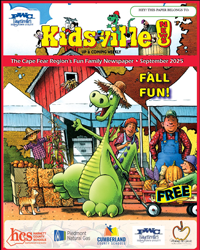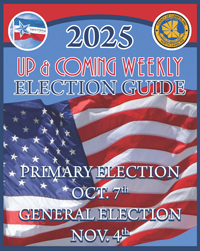Hurricane Preparedness
- Details
With hurricane season upon us, now is the time to check your emergency kit, and if you don’t have one, make one. There is no better time to put one together than before it is needed. Even with so much information available through places like the Red Cross, only about 1/3 of the population actually has an emergency kit put together according to Jack Nales, executive director of the American Red Cross, Highlands Chapter.
“Even following a year where there are landfalls of hurricanes or a large disaster you would think everyone would say ‘Oh this does really happen. I do need to be prepared,’” said Nales. “I’m sure some people think they are not vulnerable and they can ride things out, but I am sure a lot of it is just other things competing for their attention.”
He said making and maintaining an emergency kit needs to be a priority in order for it to work in a time of need.
Putting an emergency kit together is pretty straightforward. “It is basically stuff that is normally in the home anyway — we are talking food, clothing, first-aid kit, important documents — its just getting everything organized” said Nales. And by planning ahead, building an emergency kit doesn’t need to break the bank. It is a matter of picking up a few extra things at the store over a period of time.
“When you are buying your food, you need to have some things in your pantry that are easy to eat … easy to open. You need to have either a manual can opener or some of those cans with pop tops on them so you can access the food,” said Nales. “Nothing worse than looking at ‘OK, I can live off beanie weenies’ and then realizing ‘Oh no, my electric can opener doesn’t work and I don’t have a manual can opener, and these aren’t the ones with the pop tops on them.’ So it’s just looking at things like that and stocking up on things that you normally have,” he added.
If the thought of starting a kit from scratch is too overwhelming or time consuming to think about, the American Red Cross has thought of that too. There is an online presenentation at www.redcross.org/beredcrossready on the things to do to make a plan, and the things to do to make an emergency kit. The third section has some CPR information on it too. “So in about 40 minutes or so you can watch all this stuff,” said Nales, “and for a lot of people it is a lot easier to watch it than to read it or research it.” The Web site also has printed materials on what you need to do to be prepared.
Just in case you don’t make it to the Web site, here is a list of some things from www.ncready.org to consider, in keeping you and your family ready for a disaster.
Essentials:
•Water — 1 gallon per person per day (a week’s supply of water is preferable); {mosimage}
•Water purification kit or bleach;
•First-aid kit and first-aid book;
•Pre-cooked, non-perishable foods, such as canned meats, granola bars, instant soup & cereals, etc.;
•Baby supplies: formula, bottle, pacifier, soap, baby powder, clothing, blankets, baby wipes, disposable diapers, canned food and juices;
•Non-electric can opener;
•Anti-bacterial hand wipes or gel;
•Blanket or sleeping bag per person;
•Portable radio or portable TV and extra batteries;
•Flashlight and extra batteries;
•Essential medications;
•Extra pair of eyeglasses;
•Extra house and car keys;
•Fire extinguisher — ABC-type;
•Food, water, leash and carrier for pets;
•Cash and change;
•Seasonal change of clothing, including sturdy shoes;
•Sanitation supplies;
•Large plastic trash bags for waste, tarps and rain ponchos;
•Large trash cans;
•Bar soap and liquid detergent;
•Shampoo;
•Toothpaste and toothbrushes;
•Feminine hygiene supplies;
•Toilet paper;
•Household bleach;
•Rubber gloves.
“If you have a plan of what you would do in case of a disaster and have a kit and your supplies ready (whether you have to stay at home or leave and go to a shelter) can make an experience during a disaster the difference between an inconvenient camping trip and feeling like you are an unsuccessful candidate on survivor,” noted Nales.

 How to resolve AdBlock issue?
How to resolve AdBlock issue? 









